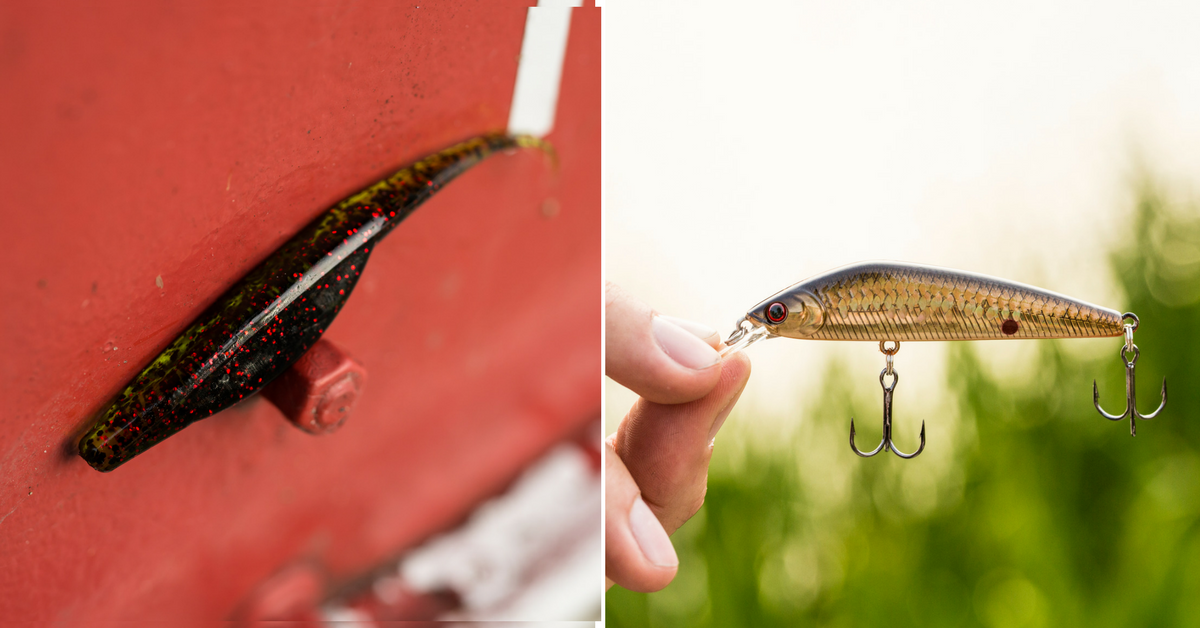Fishing Soft Bodied Jerkbaits Vs Hard Bodied Jerkbaits
What is jerkbait fishing, and how do you do it? To start with, jerkbaits are lures carrying most of the basic characteristics common to other bass fishing lures. Jerkbaits one defining characteristic is they are made in a manner that mimics an injured fish. When it comes to fishing with jerkbaits, two common techniques are used: the soft plastic jerkbaits and hard-bodied techniques. These two methods make jerkbaits very effective all year round, especially because of the control the angler has over the bait action compared to other techniques like crankbaits or finesse fishing. In this post, therefore, I will give you the full rundown on how to fish soft plastic jerkbaits vs. hard-bodied jerkbaits.
Why Choose The Soft Plastic Jerkbait
The soft plastic jerkbait technique is familiar to most anglers, especially those in their search for bass. It is useful in locating quality bass for both recreational and tournament purposes. This versatility is due to their color and plastic material distinctions, which really set them apart from other baits you might be using. They are usually used together with a 4/0 hook to adjust the weight. Therefore, to attain a desired fall, adjustments need to be done on the hook.
Speed:
A soft plastic jerkbait like the Charlie's Worms Baby Juke is effective in both deep and shallow waters due its ability to be fished at a high speed, while at the same time remaining efficient. In addition, their slow sink further makes them suitable for use at varying depths.
Texture:
Their soft bodies not only enhance their movement, but also give them a natural appearance under water. This makes the bass hang on them for a longer time giving you more time for setting your hook properly.
Visual presentation:
When fishing with a soft plastic jerkbait, visual presentation is greatly enhanced. Soft baits have a predictable manner of behavior. They are designed in an unstable manner that allows their movement through an erratic path under the waters.On the other hand, a limitation with soft plastic jerkbaits is that they are easily damaged, compared to the durable hard bodied jerkbaits. Also, an angler is required to closely monitor the line twists that can be caused by jerkbaits, because the line can twist with a soft plastic jerkbaits natural darting motion.
Why Choose Hard-Bodied Jerkbaits?
The hard bodied style of jerkbaits are made of different materials, including plastic, polymers and wood. Hard bodied jerks like the Lucky Craft SK Jerk are long and slender lures and are fitted with a lip and two to three hooks. They are specially designed to float in the water column hence easily fished on the water surface, or immediately below it.
Durable:
Hard-bodied jerkbaits have an aerodynamic shape for easy casting without being damaged, and their tough bodies can stand up to a beating from predatory fish.
Rough:
Hard-bodied jerkbaits have jointed bodies that maks them easy to maneuver in the waters and be bit by the fish. Hard-bodied jerkbaits, both jointed and non-jointed, come in different forms:
- Floating jerkbaits which remain on the surface until a sinking action is put on them.
- Sinking jerkbaits which sink at different rates depending on the action applied to them by the jerking rod.
- Suspending jerkbaits which are most commonly used with neutral buoyancy hence suitable in all depths.
In conclusion, when fishing with jerkbaits, make sure you undertake your fishing in clear waters. In addition, maintain a safe distance to ensure accurate cast to your fishing cover. Finally, maintain a rhythm with your jerkbaits in order for the fish to make a proper timing on the baits.
Updated August 19th, 2020 at 5:14 AM CT


